#futaro yamada
Text

忍法流水抄 山田風太郎
角川文庫
カバー=佐伯俊男
64 notes
·
View notes
Text
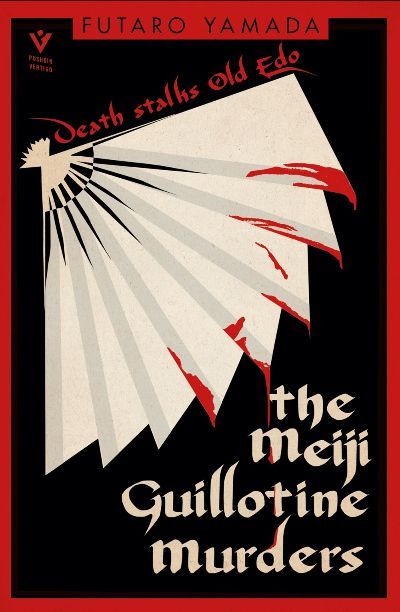
My latest review for First Clue Reviews.
t’s 1869 in the newly renamed capital of Tokyo, a year after the political revolution known as the Meiji Restoration overthrew the ruling Tokugawa shogunate that kept Japan in feudal isolation for over 200 years. It’s a time of rapid social change and political turmoil; not everyone is happy with the new government’s policy of Western modernization. Law enforcement, such as it is, is represented by five corrupt rasotsu (police officers) who are more interested in lining their pockets than in protecting the public. But they are reluctantly enlisted into the services of two chief inspectors from the Imperial Prosecuting Office as they investigate government corruption and a string of impossible-seeming murders. One inspector is the elegant and handsome Keisherō Kazuki, who cuts an odd figure in his old-fashioned clothes that make him look like “a courtier who had stepped out of the Heian period.” He is also obsessed with making the new government a just one and has imported a French guillotine as a more humane means of execution. His older colleague,Toshiyoshi Kawaij, is more down to earth, but he too is an outsider. The two men share a friendly rivalry as they probe several gruesome, supernatural-like killings. They are aided by Esmeralda, a beautiful Frenchwoman who followed Kazuki back to Japan (much to the dismay of Kazuki’s fiancée and her father) and who now is studying to become a miko, a Shinto shrine maiden with shamanistic powers that enable her to speak for the dead. How these crimes connect to the book’s title is resolved surprisingly and cleverly in the final section. Although the plethora of Japanese names can at first be confusing (a glossary of Japanese terms would also have been helpful), Karetnyk’s stylish and witty translation (there’s a lot of humor in this dark, bloody tale) quickly draws readers into Yamada’s atmospheric world. And Kazuki and Kawaij (a historical figure considered the father of the modern Japanese police force) make for a memorable sleuthing duo. Noted for his ninja novels, Yamada has written an engrossing, twisty tale that will appeal to fans of well-designed puzzle mysteries and international crime fiction with a fascinating historical setting.
1 note
·
View note
Text

A post for my book recommendations, to be continuously updated as I read and remember more. Because without reading, I would not be writing.
All time favourites are marked with a ☆
All are sorted by genre and will be linked (if able) to their Goodreads pages so that you can dig deeper into whatever catches your eye.
(ps if you have a Goodreads account, you can add me here)

Anthology/Short Story Collections
Behold This Dreamer - Walter de la Mare ☆
Love Letters of Great Men - Ursula Doyle
Difficult Women - Roxane Gay
The Paper Menagerie and Other Stories - Ken Liu
The Elephant Vanishes - Haruki Murakami

Essays
Bad Feminist - Roxane Gay ☆
Bluets - Maggie Nelson ☆
On Freedom - Maggie Nelson
In Praise of Shadows - Jun'ichirō Tanizaki
Malleable Forms - Meeka Walsh ☆

Fiction (Classic)
Persuasion - Jane Austen ☆
Pride and Prejudice - Jane Austen
The Awakening - Kate Chopin
North and South - Elizabeth Gaskell ☆
Siddhartha - Hermen Hesse
The Unbearable Lightness of Being - Milan Kundera ☆
Lolita - Vladimir Nabokov

Fiction (Modern)
All’s Well - Mona Awad ☆
Bunny - Mona Awad
Jonathan Livingston Seagull - Richard Bach
The Pisces - Melissa Broder
The Alchemist - Paulo Coelho
For Today I Am A Boy - Kim Fu
The Vegetarian - Han Kang
The Historian - Elizabeth Kostova ☆
Fall on Your Knees - Ann-Marie MacDonald
A Girl is a Half-Formed Thing - Eimear McBride
No Country for Old Men - Cormac McCarthy
The Road - Cormac McCarthy ☆
Under the Hawthorne Tree - Ai Mi
The Song of Achilles - Madeleine Miller ☆
After Dark - Haruki Murakami ☆
Colorless Tsukuru Tazaki and His Years of Pilgrimage - Haruki Murakami
1Q84 - Haruki Murakami ☆
Hamnet - Maggie O'Farrell
The English Patient - Michael Ondaatje
Boy, Snow, Bird - Helen Oyeyemi
Mr. Fox - Helen Oyeyemi ☆
A Tale for the Time Being - Ruth Ozeki
The Overstory - Richard Powers ☆
The Godfather - Mario Puzo
Blindness - José Saramago
How To Be Both - Ali Smith
The Goldfinch - Donna Tartt ☆
The Secret History - Donna Tartt
Ru - Kim Thúy
Brooklyn - Colm Tóibín
Big Fish - Daniel Wallace
Kitchen - Banana Yoshimoto

Horror/Thriller
The Exorcist - William Peter Blatty
Jurassic Park - Michael Crichton
Gerald’s Game - Stephen King
The Shining - Stephen King
Audition - Ryū Murakami
I’m Thinking of Ending Things - Iain Reid

Manga/Graphic Novels
Basilisk - Futaro Yamada, Maseki Sagawa
Death Note - Tsugumi Ohba, Takeshi Obata
Eureka Seven - Jinsei Kataoka, Kazuma Kondou
Lore Olympus - Rachel Smythe
Nana - Ai Yazawa ☆
Paradise Kiss - Ai Yazawa
Uzumaki - Junji Ito
xxxHolic - CLAMP

Memoirs/Journals
Speak, Okinawa - Elizabeth Miki Brina
Brain on Fire: My Month of Madness - Susannah Cahalan
Smoke Gets In Your Eyes - Caitlin Doughty
I’m Glad My Mom Died - Jennette McCurdy
What I Talk About When I Talk About Running - Haruki Murakami
Reading Lolita in Tehran: A Memoir in Books - Azar Nafisi
Henry and June - Anaïs Nin ☆
The Glass Castle - Jeanette Walls ☆

Non-Fiction (General)
Quiet: The Power of Introverts in a World That Can’t Stop Talking - Susan Cain
The Red Market - Scott Carney
The Swerve: How the World Became Modern - Stephen Greenblatt
Dark Money: The Hidden History of the Billionaires Behind the Rise of the Radical Right - Jane Mayer
The Psychopath Test - Jon Ronson
The Elements of Style - William Strunk Jr, E.B White

Non-Fiction (Philosophy/Spiritual)
The Teachings of Don Juan: A Yaqui Way of Knowledge - Carlos Castañeda
Silence: In the Age of Noise - Erling Kagge ☆
The Kybalion - Three Initiates ☆
The Tibetan Book of the Dead: The Great Liberation Through Hearing in the Bardo - Chögyam Trungpa
Tao Te Ching - Lao Tzu

Poetry Collections
I Love My Love - Reyna Biddy
Let Us Compare Mythologies - Leonard Cohen
The Prophet - Khalil Gibran
The Anatomy of Being - Shinji Moon
The Beauty of the Husband - Anne Carson ☆
Teaching My Mother How to Give Birth - Warsan Shire
Night Sky with Exit Wounds - Ocean Vuong

Speculative Fiction
Dune - Frank Herbert
Station Eleven - Emily St. John Mandel ☆
Battle Royale - Koushun Takami

True Crime
Helter Skelter: The True Story of the Manson Murders - Vincent Bugliosi
In Cold Blood - Truman Capote ☆

Young Adult
A Great and Terrible Beauty - Libba Bray ☆
The Diviners - Libba Bray
The Sun is Also a Star - Nicola Yoon

35 notes
·
View notes
Text
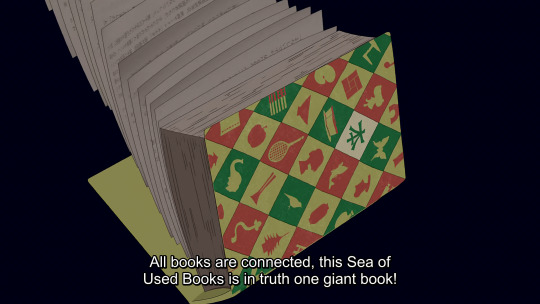
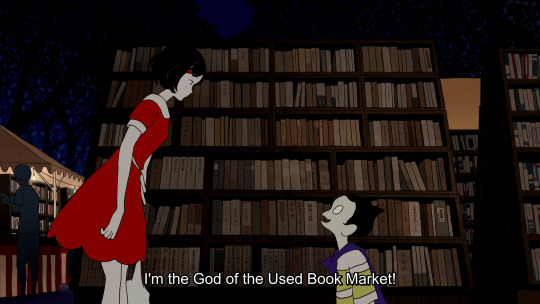

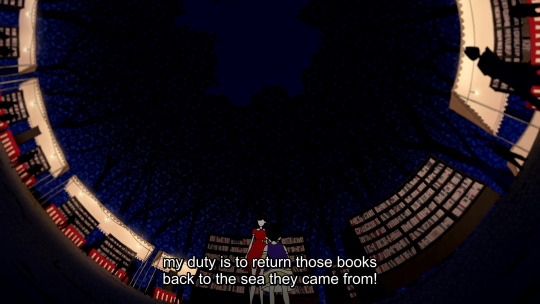
“Hey miss, did you know? Every book is connected. For example, that girl has the entire Sherlock Holmes. The author, Conan Doyle. Getting inspiration from the French author Jules Verne, he wrote the science-fiction novel ‘The Lost World.’ Now look at the book over there. That’s Mathias Sandorf, written by Verne out of respect to Alexandre Dumas. Dumas’ work, ‘The Count of Monte Cristo’, came to Japan under the name ‘The Cavern King.’ The first to adapt it was Ruiko Kuroiwa of the Yorozu Morning News. And he in turn appeared as a character in the novel ‘The Meiji Tower of Babel.’ The author of that was Futaro Yamada. In his ‘War Generation Anti-War Diaries’, Yamada declared the novel ‘Oni Fire’ to be utter rubbish. That was written by Seishi Yokomizo. He was an editor at the magazine ‘Shin Seinen’ in his youth, and his co-editor at the time was On Watanabe, author of ‘The Androgynous Scion.’ Junichiro Tanazaki submitted an article titled ‘Harusamu’ to honor him after his death. Tanazaki engaged in fierce literary dispute with Ryunosuke Akutagawa. Months after the dispute, Akutagawa took his own life. Hyakken Uchida explored the particulars of this suicide in ‘Bowler Hat.’ This work was then praised by Yukio Mishima. At the age of 22, Mishima declared his hatred of Osamu Dazai directly to Dazai’s face. After losing his friend to tuberculosis, Dazai wrote an article in his memoriam, the author of that book there, Sakunosuke Oda. All books are connected, this Sea of Used Books is in truth one giant book! I’m the God of the Used Book Market! I offer divine wrath to those who stop the flow of books by locking them away, my duty is to return those books back to the sea they came from!”
8 notes
·
View notes
Text
Gosho's Detective Picture Book Reviews
My review of detectives (and detective novels) based on Gosho's Detective Picture Book (also called Gosho's Mystery Library) are as below, to be completed not in the near future.
❤️ denote my personal favorites
Sherlock Holmes (Arthur Conan Doyle) ❤️
Kogoro Akechi (Edogawa Rampo)
Hercule Poirot (Agatha Christie) ❤️
Arsene Lupin (Maurice Leblanc)
Jules Maigret (Georges Simenon)
Kousuke Kindaichi (Seishi Yokomizo)
Lieutenant Columbo (Richard Levison and William Link)
Zenigata Heiji (Kodo Nomura)
Philip Marlowe (Raymond Chandler)
C. Auguste Dupin (Edgar Allan Poe)
Ellery Queen (Ellery Queen) ❤️
V.I. Warshawski (Sara Paretsky)
Father Brown (C.K. Chesterton)
Cordelia Gray (P.D. James) ❤️
Heizo Hasegawa (Shotaro Ikenami)
Mitsuhiko Asami (Yasuo Uchida)
Nero Wolfe (Rex Stout)
Shunsaku Kudo (Nobumitsu Kodaka)
Hannibal Lecter (Thomas Harris)
Miss Marple (Agatha Christie) ❤️
Sam Spade (Dashiell Hammett)
Shozo Totsugawa (Kyotaro Nishimura)
Ninzaburo Furuhata (Kouki Mitani)
Perry Mason (Erle Stanley Gardner)
Mikeneko Holmes (Jiro Akagawa)
Inspector Samejima (Arimasa Osawa)
James Bond (Ian Fleming)
Kyosuke Kamizu (Akimitsu Takagi)
Charlie Chan (Earl Derr Biggers)
John Thorndyke (Richard Austin Freeman)
Touyama Kin-san (Tatsurou Jinde)
Mike Hammer (Mickey Spillane)
Philo Vance (S.S. Van Dine)
Akakabu-kenji (Shunzo Waku)
Drury Lane (Ellery Queen)
Katherine Turner (Misa Yamamura)
Henry Jackson (Isaac Asimov)
Denshichi (Tatsurou Jinde)
Lew Archer (Ross Macdonald)
Kiyoshi Mitarai (Soji Shimada)
The Old Man in the Corner (Baroness Orczy)
Joseph Rouletabille (Gaston Leroux)
Hanshichi (Kido Okamoto) ❤️
Koichiro Munakata (Seiichi Morimura)
Eitaro Imanishi (Seicho Matsumoto)
Gideon Fell (John Dickson Carr)
Yuichiro Goda (Kaoru Takamura)
Ukyou Sugishita (Yasuhiro Koshimizu)
Steve Carella (Ed McBain)
Hideo Himura (Alice Arisugawa)
Riyako Asabuki (Shizuko Natsuki)
Robert Ironside (Collier Young)
Akihiko Chuzenji (Natsuhiko Kyogoku)
Kiyoshi Shimada (Yukito Ayatsuji)
The Continental Op (Dashiell Hammett) ❤️
Ningyo Sashichi (Seishi Yokomizo)
Joseph French (Freeman Wills Crofts)
Yoshibumi Takagi (Kenzo Kitakata)
Mom (James Yaffe)
Rintaro Norizuki (Rintaro Noziruki)
Koko (Lilian Jackson Braun)
Manabu Yukawa (Keigo Higashino) ❤️
Daisuke Kanbe (Yasutaka Tsutsui)
Inspector Zenigata (Monkey Punch)
Robert Langdon (Dan Brown)
Akojuro Senba (Juran Hisao)
Kanki Ibaragi (Futaro Yamada)
Bannai Tarao (Yoshitake Hisa)
Richard Cuff (Wilkie Collins)
Philip Trent (E.C. Bentley)
Gregory House (David Shore)
Yoshio Kuraishi (Hideo Yokoyama)
Adrian Monk (Andy Breckman and David Hoberman)
Inspector Onitsura (Tetsuya Ayukawa)
Enshi Shunotei (Kaoru Kitamura)
Lincoln Rhyme (Jeffery Deaver)
Kei Enomoto (Yusuke Kishi)
Keisuke Shiratori (Takeru Kaido)
Genya Tojo (Shinzo Mitsuda)
Shioriko Shinokawa (En Mikami)
Handyman of Susukino (Naomi Azuma)
Kageyama (Tokuya Higashigawa)
Hotaro Oreki (Honobu Yonezawa)
Lisbeth Salander (Stieg Larsson)
Lieutenant Fukuie (Takahiro Ookura)
Takeshi Yoshiki (Soji Shimada)
Jiro Egami (Alice Arisugawa)
Kyouko Okitegami (Nisio Isin)
Sakurako Kujou (Shiori Ota)
The Phantom Thief Detective Yamaneko (Manabu Kaminaga)
Riko Rinda (Keisuke Matsuoka)
Shinichiro Hanaoka (Koji Hayashi and Junpei Yamaoka)
Richard Castle (Andrew W. Warlowe)
Hiroto Miyama (Manabu Uda)
Yukimasa Yugami (Hideo Iura)
Mikoto Mitsumi (Akiko Nogi)
Keita Kurokochi (Takashi Nagasaki)
Totono Kuno (Yumi Tamura)
Maomao (Natsu Hyuga)
Sherlock Holmes (Steven Moffat and Mark Gatiss) ❤️
Rohan Kishibe (Hirohiko Araki)
Seiko Fuji (Miko Yasu)
10 notes
·
View notes
Text
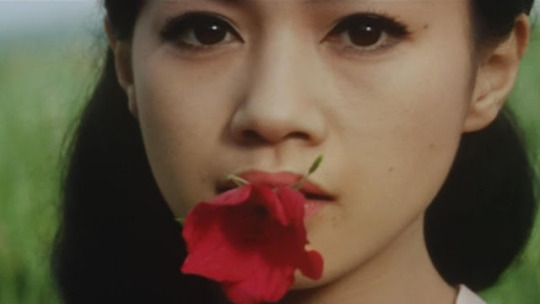
Mariko Kaga in Pleasures of the Flesh (Nagisa Oshima, 1965)
Cast: Katsuo Nakamura, Mariko Kaga, Yumiko Nagawa, Masako Yagi, Toshiko Higuchi, Hiroko Shimizu, Shoichi Ozawa, Kei Sato, Rokko Toura, Fumio Watanabe, Hosei Kamatsu, Akiji Kobayashi. Screenplay: Nagisa Oshima, based on a novel by Futaro Yamada. Cinematography: Akira Takada. Art direction: Yasutaro Kon. Music: Joji Yuasa.
With a burst of bluesy music, Pleasures of the Flesh starts out like a film noir, and the plot setup follows suit. The young tutor to a pretty teenager kills a man who has molested her, but the act has been witnessed by a man who has embezzled funds from his place of work. In an attempt to blackmail the tutor, the embezzler says he won't tell the police if the young man will hide 30 million yen of the loot. The embezzler expects to be arrested, he says, but he'll return for the money after serving his prison sentence. If the tutor has spent any of it, he'll tell the police about the murder. The tutor reluctantly agrees, but then the plot not unexpectedly begins to tangle. The tutor, Atsushi (Katsuo Nakamura), is in love with the teenager, Shoko (Mariko Kaga), but too poor to win her parents' approval. He's so devastated when she marries that he begins to lose his mind. The embezzler has in fact gone to prison, and Atsushi decides to live it up on the 30 million yen, then kill himself when the embezzler has served his term. And so begins a series of flings with four women, each of whom he pays to live with him. There's a showgirl with a gangster boyfriend, a married woman whose husband is desperately in debt, a doctor who insists on remaining a virgin, and a mute prostitute with a thuggish pimp. None of these attempts to wallow in the titular pleasures of the flesh ends well, and then, just as Atsushi spends the last of the money, he learns that the embezzler has died in prison. As if that outcome weren't ironic enough, the embezzler also told a fellow inmate about the 30 million yen he had stashed with Atsushi and when he's released he comes in search of the money. It's a moral tale straight out of Boccaccio or Chaucer, but writer-director Nagisa Oshima is faced with modernizing it and doesn't quite succeed. There's a bit too much fancy camerawork as Oshima interpolates Atsushi's obsessive visions of Shoko and paranoid ones of the embezzler into the narrative. The moral tale still feels heavyhanded. But Pleasures of the Flesh is the work of a major filmmaker at the outset of his career, and as such rewards watching.
4 notes
·
View notes
Text
The adventures of the ninja
Chapter 4
Inside the ninja nomicon
As I opened my eyes,
I found myself in a familiar place. It’s was the village where I defeated the dragon in my dream.
But the village was now in shambles like an abounded village…
Well… it’s a abounded village now. All the Minka’s where ripped apart,store’s windows where all broken, everything was all destroyed.
“I guess this a sequel of my dream.” I thought to myself. While wondering around holding my ninja mask.
I felt a kunai (kunai (plural kunai) A Japanese tool and weapon, possibly derived from the masonry trowel, used as a weapon by ninja or samurai.) crossed behind my cheek leaving a little scar.
I looked behind me and saw a man with a mask that looked like the ninja mask that I held in my hands and a red bandanna tied in his head and he was wearing something like a ninja outfit.
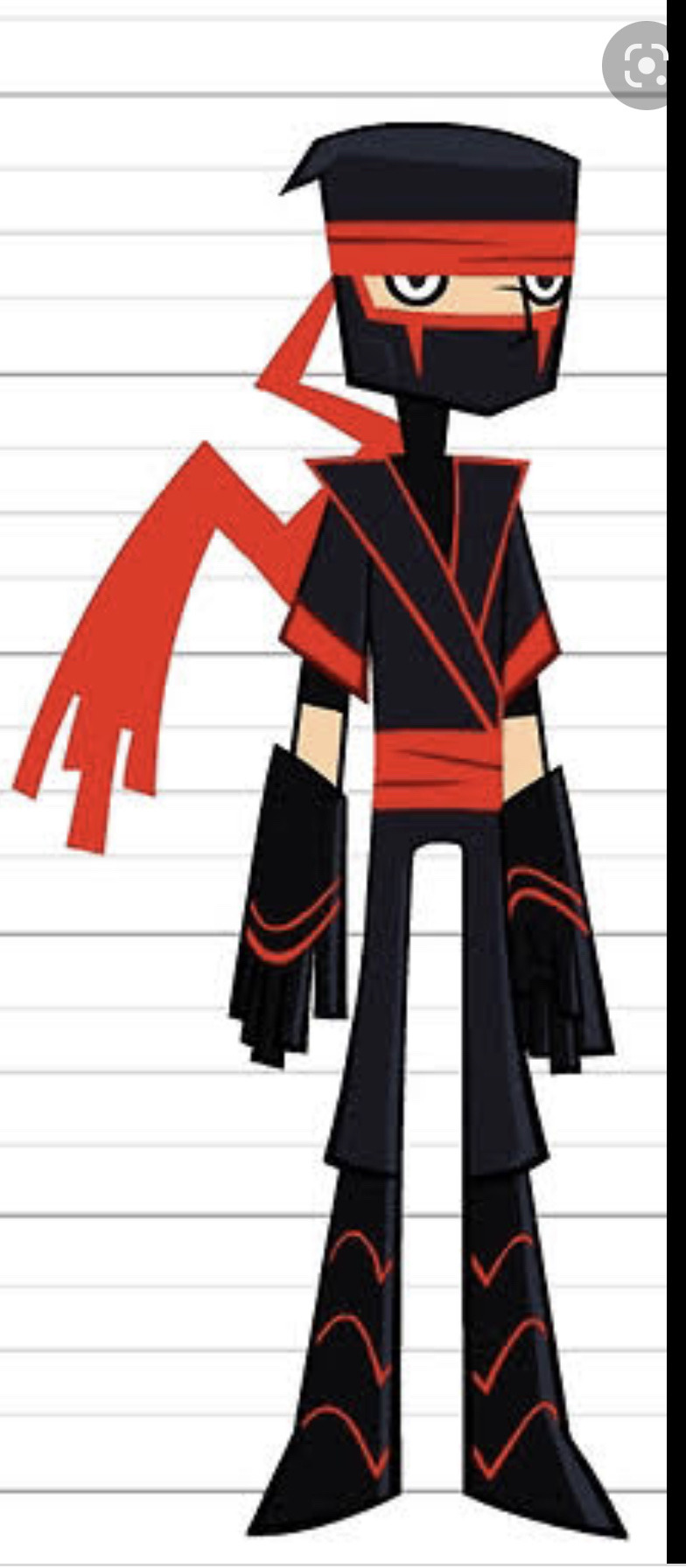
Then the ninja guy attack me
The ninja dude punched me and kicked me very bad.
All I could do was run.
But this was different compared to the dragon. With the dragon I managed to outrun him a bit. But the ninja guy caught up to me sometimes and beat me up pretty bad.
Then I saw a nearby bush. This gave me a idea. That might distract him for a while.
So I began to run in circles very fast.
After the 16th circle I ran out of the circle and hid in the nearby bush. With the ninja mask in my hand.
But I knew that the ninja guy wasn’t going to be distracted for long. I also knew that I needed to think of something before I get killed.
While I was thinking I looked at the ninja mask in my hand. Then I thought about a stupid plan.
“I could wear this mask and make that guy think that I’m a ninja like him and then I’ll find his weak spot then attack him with it.I know it’s a stupid plan but it couldn’t hurt to try.” I thought to myself.
Kunoichi outfit. ( kunoichi is a Japanese cant term for "woman"In popular culture, it is often used for female ninja or practitioner of ninjutsu (ninpo). The term was largely popularized by novelist Futaro Yamada in his novel Ninpō Hakkenden in 1964.Although kunoichi have appeared in numerous creative works, including novels, TV dramas, movies, and manga, Mie University historians have concluded that there are no historical records of female ninja performing reconnaissance and subversive activities in the same manner as their male counterparts. However, the late 17th century ninja handbook Bansenshukai describes a technique called kunoichi-no-jutsu (“the ninjutsu of a woman") in which a woman is used for infiltration and information gathering, which Seiko Fujita considers evidence of female ninja activity)

Then the ninja guy found me and it seems that even if I wear this kunoichi outfit he still recognizes me.
But then when he tried to attack me again. I finally was able to dodge his attack.
After I dodged his attack. I felt something heavy in my back when I reached with my hand to see what it was a katana.(A katana is a Japanese sword characterized by a curved, single-edged blade with a circular or squared guard and long grip to accommodate two hands. Developed later than the tachi, it was used by samurai in feudal Japan and worn with the edge facing upward. Since the Muromachi period, many old tachi were cut from the root and shortened, and the blade at the root was crushed and converted into katana.The official term for katana in Japan is uchigatana and the term katana often refers to single-edged swords from around the world.)
It wasn’t the only weapon in the suit there was weapons like…
A shuriken (shuriken (is a hidden hand blade") is a Japanese concealed weapon that was used as a hidden dagger or metsubushi to distract or misdirect. Five types of shuriken.Edo period shuriken in Odawara Castle Museum, Japan. They are also known as throwing stars, or ninja stars, although they were originally designed in many different shapes. The major varieties of shuriken are the bō shuriken (stick shuriken) and the hira shuriken (flat shuriken) or shaken (wheel shuriken, also read as kurumaken).Shuriken were supplementary weapons to the sword or various other weapons in a samurai's arsenal, although they often had an important tactical effect in battle.[better source needed] The art of wielding the shuriken is known as shurikenjutsu and was taught as a minor part of the martial arts curriculum of many famous schools, such as Yagyū Shinkage-ryū, Tenshin Shōden Katori Shintō-ryū, Ittō-ryū, Kukishin-ryū, and Togakure-ryū.)
The Japanese war fan, or tessen (tessen, lit. '"iron fan"'), is a weaponized Japanese hand fan designed for use in warfare. Several types of war fans were used by the samurai class of feudal Japan and each had a different look and purpose.
And a sai (The sai (lit. 'Hairpin'; lit. 'Iron Ruler') is a traditional Okinawan stabbing weapon used for stabbing and striking. It is most famously used in ninjutsu and kobudo, but also in southern Chinese martial arts. The basic form of the weapon is that of a sharp metal prong with two curved sideprongs (yoku) projecting from the handle (tsuka). There are many different types of sai with varying prongs for trapping and blocking.)
And many more cool weapons like these.
But how much I tried I just wasn’t able to defeat the ninja dude. In the end I was pinned against the wall wounded and scars.
Just as I thought I was done, I was… “ fine?” I asked shock after the red beam hit me. all my wounds and scars were gone like it was never existed.
Then the ninja guy lend me his hand and asked
“ Do you need a hand?”
“No I don’t need help getting up by ninja’s who tried to kill.” I said to the ninja dude sarcastically.
The ninja dude seemed to be annoyed by my answer. “I think we got on the wrong foot.” Said ninja dude.
“You think!” I scoffed at the ninja.
He just ignore my comment and began to introduce himself.
“I’m first ninja of Norrisvile.”said the ninja guy.
My anger suddenly turned to shock. “Was this guy really the first ninja” I thought to myself.
Soon my head was filled with tons of questions.
Then I said “I don’t believe you.”
“It’s is true miss Ami whether you believe it or not.” Said the ninja guy with a serious face.
Then I felt my spine shivering. “How do you know my name?!” I asked scared and quickly.
The man called Akio stayed silent for a moment then said “We been watching over you ever since you were little.” Said the first ninja
“We?” I asked curiously.
“You’ll meet them soon but not today.” Said the first ninja trying to avoid the subject. “Have any other questions?” Asked the first ninja.
I thought about what I could ask the ninja dude before then I realized something. “Where am I? Since I been beaten up by you several times is pretty clear that this isn’t a dream.”
The ninja just nodded and said “You’re right this isn’t a dream. Your inside the ninja nomicon.”
“I’m sorry ninja what now?” I asked confused.
“The ninja nomicon the knowledge of every ninja including myself hold inside this book.”Akio said calmly
Then I remembered the book that came with the mysterious package. “Was that the ninja nomicon?” I mumbled.
The ninja heard me and nodded his head “Any other questions?” Asked The first ninja.
I thought about it more then I remembered my dream.
“Was my dream had to do with any of this?” I asked
First ninja nodded again saying “They wanted to test how sharp you were.”
“They? Who are they? Are you talking about the people that you were watching over me?” I asked
The ninja just stood silent I guess he didn’t want me to know those people yet. So I asked my next question
“Why did you attack me?” I asked changing the subject.
“I wanted to test you too” I said to The ninja before me
“Test me for what?” I asked curiously
“For to be the next ninja.” Said Akio sternly
“And I failed miserably by not defeating you haven’t I so I can’t be the ninja.” I said disappointed in my self. Because the truth was when I heard about the ninja history I wanted became a ninja that what got me hooked in to Japanese culture in the first place. But now I can’t be the ninja all my hope was gone until…
“Who said you wouldn’t be next ninja just because you couldn’t beat me?” I asked the first ninja
“But then why did you and the others test me if you guys were going to make me the ninja?” I asked confused and curious
“We wanted see what you were lacking so we could train you accordingly” answered First ninja
“So I could still be the ninja even tho I couldn’t defeat you?” I asked First ninja
“Of course there are some rules if you’re willing to follow them like rule number 1 do not reveal your identity to anyone no matter how close you guys are.” Said the first Ninja with a stern look but then he said “But if you do not want be the ninja you could give the mask and then the ninja nomicon would go somewhere else to find a ninja and you could pretend this never happened.”
I looked at my hands thinking was I really up for the challenge.
Then I looked at The first ninja and said “When does my training began?” I asked with determination in my eyes.
The first ninja smirked.
That is how my training with the first ninja began.
End of chapter
#next gen kids#rc9gn#fighting#Japanese weapons#first ninja rc9gn#ninja nomicon#questions#art of healing RC9GN#my art <3#kunoichi outfit#shuriken#sai#katana#war fan#punched#kicked#dodging#attacking#test#we?#drawing#writing#fanfic#my writing#chapter 4
2 notes
·
View notes
Text
Alternate historyAlternate history (also alternative history, althist, AH) is a theme of speculative fiction of stories in which one or more historical events occur and are resolved differently than in real life. Allohistory (other history) is another term for the genre of alternative history. An alternate history requires three conditions: (i) A point of divergence from the historical record, before the time in which the author is writing; (ii) A change that would alter known history; and (iii) An examination of the ramifications of that alteration to history.One early work of fiction detailing an alternate history is Joanot Martorell's 1490 epic romance Tirant lo Blanch, which was written when the loss of Constantinople to the Turks was still a recent and traumatic memory for Christian Europe. It tells the story of the knight Tirant the White from Brittany who travels to the embattled remnants of the Byzantine Empire. He becomes a Megaduke and commander of its armies and manages to fight off the invading Ottoman armies of Mehmet II. He saves the city from Islamic conquest, and even chases the Turks deeper into lands they had previously conquered.One of the earliest works of alternate history published in large quantities for the reception of a large audience may be Louis Geoffroy's Histoire de la Monarchie universelle: Napoléon et la conquête du monde (1836) (History of the Universal Monarchy: Napoleon and the Conquest of the World), which imagines Napoleon's First French Empire emerging victorious in the French invasion of Russia in 1812 and in an invasion of England in 1814, later unifying the world under Bonaparte's rule.If It Had Happened Otherwise is a 1931 collection of essays edited by J. C. Squire and published by Longmans, Green. Each essay in the collection could be considered alternate history or counterfactual history, a few written by leading historians of the period and one by Winston Churchill.One of the entries in Squire's volume was Churchill's "If Lee Had Not Won the Battle of Gettysburg", written from the viewpoint of a historian in a world in which the Confederacy had won the American Civil War. The entry considers what would have happened if the North had been victorious (in other words, a character from an alternate world imagines a world more like the real one we live in, although it is not identical in every detail). Speculative work that narrates from the point of view of an alternate history is variously known as "recursive alternate history", a "double-blind what-if", or an "alternate-alternate history".Alternate history has long been a staple of Japanese speculative fiction with such authors as Futaro Yamada and Ryō Hanmura writing novels set in recognizable historical settings with added supernatural or science fiction elements. Ryō Hanmura's 1973 Musubi no Yama Hiroku which recreated 400 years of Japan's history from the perspective of a secret magical family with psychic abilities. The novel has since come to be recognized as a masterpiece of Japanese speculative fiction. Twelve years later, author Hiroshi Aramata wrote the groundbreaking Teito Monogatari which reimagined the history of Tokyo across the 20th century in a world heavily influenced by the supernatural.Radical alternative histories, which explore the consequences of fundamental shifts in biological evolution or geological history, include Harry Harrison's series about the survival of the Dinosaurs, begun with West of Eden(1984); Turtledove's Atlantis series beginning with Opening Atlantis(2007), in which a mid-Atlantic subcontinent calved off from North America in the geologic past.
More radical still are novels which portray Alternate-Cosmos universes where the laws of Physics and the structure of the world may be different.Alien space bats: "Alien space bats" ("ASBs") is a neologism for plot devices used in alternate history to mean an implausible point of divergence. "Alien space bats" originally was used as a sarcastic attack on poorly-written alternate histories seen as being implausible. The attacks are usually phrased as the need for "alien space bats" or by saying that the alternate history has gone into "ASB territory". The term eventually evolved into a reference to deus ex machina to create an impossible point of divergence. Examples include changes to the physical laws of nature, time travel, and advanced aliens interfering in human affairs. The use of ASBs in alternate history can be controversial. Some writers use them on purpose, adding science fiction or fantasy elements, or intentionally making unrealistic mashups of different eras. However, some AH projects use Alien Space Bats out of ignorance or naïveté. Things happen unrealistically because the writer has not put in the work to understand the era that they are working with. These unintentionally ASB timelines are generally looked down upon.Alternate Timeline: The Alternate Timeline at its core is different from the parallel universe in that it's only one universe, only played out multiple ways. Imagine you're writing something on a piece of paper and made a mistake: you can erase it with an eraser and write over it, or you can grab a new piece of paper. The first one is this trope, the second one is Parallel Universe. Technically, alternative histories as a result of time travel are not parallel universes: while multiple parallel universes can co-exist simultaneously, only one history or alternative history can exist at any one moment, as alternative history usually involves, in essence, overriding the original timeline with a new one. As a result, travel between alternative histories is not possible without reverting the timeline back to the original.
There are exceptions to the above, and an alternate history doesn't necessarily overwrite the old one. There are no rules written in stone regarding this. Modern ideas of time travel pose the idea of branching timelines. If a timeline isn't explicitly stated to have been erased, it's still there.
0 notes
Text



Packing stuff up for an eventual move and wow...these bring back memories.
Faust was a short lived attempt at publishing a manga/light novel anthology in the US. Pretty sure those are the only two volumes that were released from the now defunct Del Ray Manga imprint.
The same company that released Futaro Yamada's The Kouga Ninja Scrolls, an ultraviolent Romeo and Juliet style story about rival super powered ninja clans during the Tokugawa era. The novel was eventually adapted in the anime and manga series, Basilisk.
Missing were the first two volumes of a much longer light novel series by Gakuto Coda. They were released by Tokyopop back in the day and play around with supernatural phenomena, yokai, UFO's, psychic abilities, mysticism, and conspiracy theories. I'm not sure if anything else by Gakuto Coda has ever made it stateside.
Ninja Justice is a very old translation of a pulp-y short story series by Shotaro Ikenami. It's about Baian, an acupuncturist/doctor who moonlights as a brutal assassin. The stories were adapted into a TV show starring Ken Watanabe as Baian the Assassin. He's a lot more likable in the TV show than he is in the novel.
0 notes
Text

信玄忍法帖 山田風太郎
角川文庫
カバー=佐伯俊男
64 notes
·
View notes
Photo
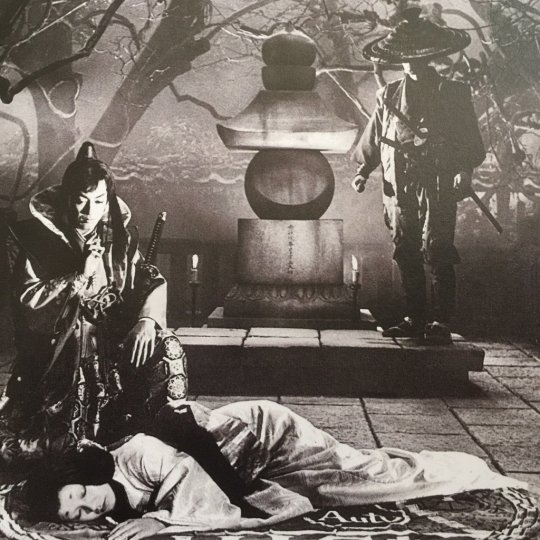
"East-West mixed art of "Samurai Reincarnation" ... 1981, directed by Kinji Fukasaku, Sonny Chiba, Kenji Sawada, Akiko Kana, Ken Ogata, based on Futaro Yamada's bizarre novel, and the dead Amakusa Shiro Miyamoto Musashi And Hosokawa Gracia are revived and fight against the Tokugawa Shogunate." Text by BON@1632bdkrst
99 notes
·
View notes
Text

A post for my book recommendations, to be continuously updated as I read and remember more. Because without reading, I would not be writing.
All time favourites are marked with a ☆
All are sorted by genre and will be linked (if able) to their Goodreads pages so that you can dig deeper into whatever catches your eye
(ps if you have a Goodreads account, you can add me here)

Anthology/Short Story Collections
Behold This Dreamer - Walter de la Mare ☆
Love Letters of Great Men - Ursula Doyle
Difficult Women - Roxane Gay
The Paper Menagerie and Other Stories - Ken Liu
The Elephant Vanishes - Haruki Murakami

Essays
Bad Feminist - Roxane Gay ☆
In Praise of Shadows - Jun'ichirō Tanizaki

Fiction (Classic)
Persuasion - Jane Austen ☆
Pride and Prejudice - Jane Austen
The Awakening - Kate Chopin
North and South - Elizabeth Gaskell ☆
Siddhartha - Hermen Hesse
The Unbearable Lightness of Being - Milan Kundera ☆
Lolita - Vladimir Nabokov

Fiction (Modern)
All’s Well - Mona Awad ☆
The Pisces - Melissa Broder
The Alchemist - Paulo Coelho
For Today I Am A Boy - Kim Fu
The Vegetarian - Han Kang
The Historian - Elizabeth Kostova ☆
Fall on Your Knees - Ann-Marie MacDonald
A Girl is a Half-Formed Thing - Eimear McBride
No Country for Old Men - Cormac McCarthy
The Road - Cormac McCarthy ☆
Under the Hawthorne Tree - Ai Mi
The Song of Achilles - Madeleine Miller ☆
After Dark - Haruki Murakami ☆
Colorless Tsukuru Tazaki and His Years of Pilgrimage - Haruki Murakami
1Q84 - Haruki Murakami ☆
The English Patient - Michael Ondaatje
Boy, Snow, Bird - Helen Oyeyemi
Mr. Fox - Helen Oyeyemi ☆
A Tale for the Time Being - Ruth Ozeki
Blindness - Jose Saramgo
How To Be Both - Ali Smith
The Goldfinch - Donna Tartt ☆
The Secret History - Donna Tartt
Ru - Kim Thúy
Brooklyn - Colm Tóibín
Big Fish - Daniel Wallace
Kitchen - Banana Yoshimoto

Horror/Thriller
Tender is the Flesh - Augustina Bazterrica
The Exorcist - William Peter Blatty
I’m Thinking of Ending Things - Iain Reid
Jurassic Park - Michael Crichton
Gerald’s Game - Stephen King
The Shining - Stephen King
Audition - Ryū Murakami

Manga/Graphic Novels
Basilisk - Futaro Yamada, Maseki Sagawa
Death Note - Tsugumi Ohba, Takeshi Obata
Eureka Seven - Jinsei Kataoka, Kazuma Kondou
Lore Olympus - Rachel Smythe
Nana - Ai Yazawa ☆
Paradise Kiss - Ai Yazawa
Uzumaki - Junji Ito
xxxHolic - CLAMP

Memoirs/Journals
Brain on Fire: My Month of Madness - Susannah Cahalan
I’m Glad My Mom Died - Jennette McCurdy
What I Talk About When I Talk About Running - Haruki Murakami
Reading Lolita in Tehran: A Memoir in Books - Azar Nafisi
Henry and June - Anaïs Nin ☆
The Glass Castle - Jeanette Walls ☆

Non-Fiction (General)
Quiet: The Power of Introverts in a World That Can’t Stop Talking - Susan Cain
The Red Market - Scott Carney
The Swerve: How the World Became Modern - Stephen Greenblatt
Dark Money: The Hidden History of the Billionaires Behind the Rise of the Radical Right - Jane Mayer
The Psychopath Test - Jon Ronson
The Elements of Style - William Strunk Jr, E.B White

Non-Fiction (Philosophy/Spiritual)
The Teachings of Don Juan: A Yaqui Way of Knowledge - Carlos Castañeda
Silence: In the Age of Noise - Erling Kagge ☆
The Kybalion - Three Initiates ☆
The Tibetan Book of the Dead: The Great Liberation Through Hearing in the Bardo - Chögyam Trungpa
Tao Te Ching - Lao Tzu

Poetry Collections
I Love My Love - Reyna Biddy
Let Us Compare Mythologies - Leonard Cohen
The Prophet - Khalil Gibran
The Anatomy of Being - Shinji Moon
Teaching My Mother How to Give Birth - Warsan Shire
Night Sky with Exit Wounds - Ocean Vuong

Science Fiction
Dune - Frank Herbert
Battle Royale - Koushun Takami

True Crime
Helter Skelter: The True Story of the Manson Murders - Vincent Bugliosi
In Cold Blood - Truman Capote ☆

Young Adult
A Great and Terrible Beauty - Libba Bray ☆
The Diviners - Libba Bray
The Sun is Also a Star - Nicola Yoon

BONUS: Or, A Book I Hated So Much That it Deserves Mention Here
Blood Meridian - Cormac McCarthy

62 notes
·
View notes
Text
The Kouga Ninja Scrolls Futaro Yamada ebook epub download
The Kouga Ninja Scrolls Futaro Yamada ebook epub download
The Kouga Ninja Scrolls Futaro Yamada mobi download

Download:
PDF Not Avalaible
EPUB Not Avalaible
MOBI Not Avalaible
About Book:
AN EPIC NOVEL THAT TAKES YOU DEEPER INTO THE WORLD AND HISTORY OF BASILISK!
To determine a conflict over progression, the shogun Ieyasu Tokugawa has concocted a definitive challenge. Two adversary ninja tribes, the Kouga and the Iga, will meet in a fight until the…
View On WordPress
#The Kouga Ninja Scrolls Futaro Yamada ebook download#The Kouga Ninja Scrolls Futaro Yamada ebook epub download#The Kouga Ninja Scrolls Futaro Yamada ebook mobi download#The Kouga Ninja Scrolls Futaro Yamada ebook pdf download#The Kouga Ninja Scrolls Futaro Yamada epub download#The Kouga Ninja Scrolls Futaro Yamada mobi download#The Kouga Ninja Scrolls Futaro Yamada pdf download#The Kouga Ninja Scrolls Futaro Yamada read online
0 notes
Text
Shimousa is a whole plot reference to Makai Tensho
Makai Tensho was a novel written by Futaro Yamada in 1967. An occult sorcerer summons the spirits of various heroes from hell and Yagyu Jubei has to fight them. (Musashi takes his place in FGO) There have been a lot of tv and movie adaptions. Here’s a trailer for one where it’s most obvious. (Forgive the dubbing, please)
https://www.youtube.com/watch?v=EXCenEQI3cE
Many claim this was a major inspiration for the Fate Series itself, Nasu has stated it’s his favorite book and movie.
12 notes
·
View notes
Photo
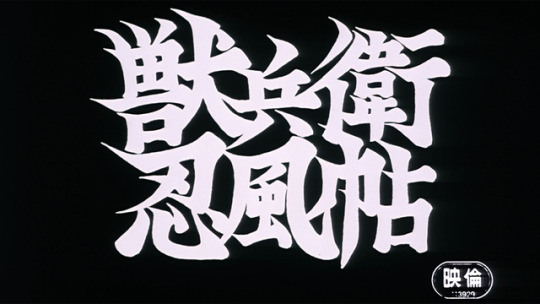
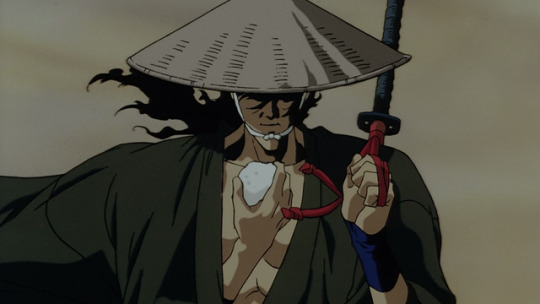
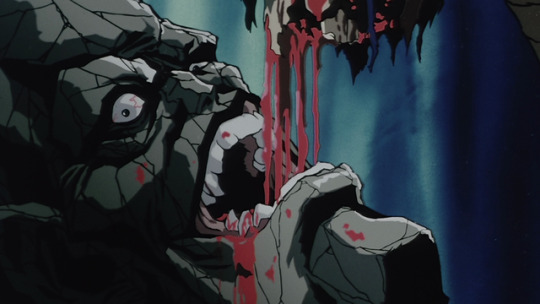


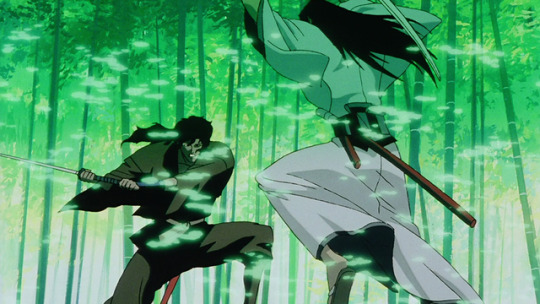
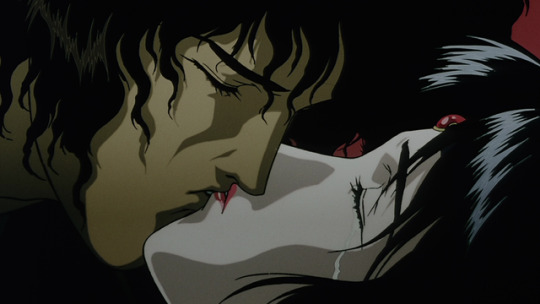
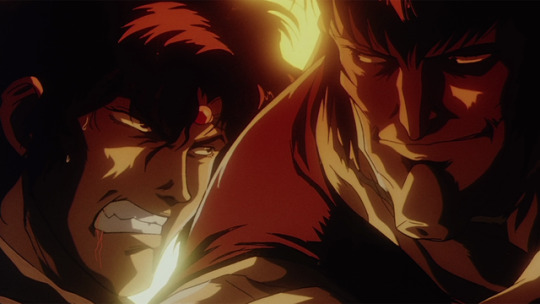
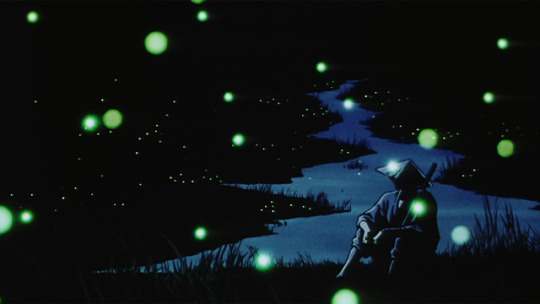
1991-1995 Anime Primer
Ninja Scroll (1993)
Jubei is a mercenary in feudal Japan whose cavalier attitude belies his fearsome skill with the sword. After saving the kunoichi Kagero from a terrible fate, he is forcibly enlisted in an effort to foil a plot against the shogunate... though it isn’t until he learns that Genma, the mortal enemy he thought he buried years ago, is the mastermind behind the conspiracy that he truly commits to the cause. Before Jubei can confront his old foe, he must defeat the Eight Devils of Kimon, a freakish clan of deadly ninjas who will use every fiendish tactic in their arsenal to finish him off.
Directed by the master of stylish violence Yoshiaki Kawajiri (Cyber City Oedo 808, Vampire Hunter D: Bloodlust), Ninja Scroll is a sublime pairing of relentless action and razor-tight pacing. Inspired by the pulp ninja novels of Futaro Yamada, there’s not a moment of boredom to be had as Jubei is assailed by one grotesque opponent after the next. Snappy dialogue, a roguishly charming hero and a star-crossed romance fill in what few gaps exist in the mayhem. Rendered in beautifully brutal fashion by Madhouse, Ninja Scroll isn’t for the faint of heart, but those with a stomach for bloodshed will discover one of the best action flicks of the 90s. It’s easy to see why Western fans considered it a prime gateway anime alongside the likes of Akira and Ghost in the Shell.
Ninja Scroll is available on DVD and Blu-ray from Sentai Filmworks.
2K notes
·
View notes
